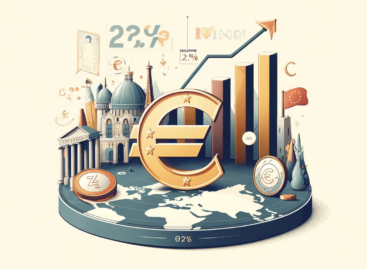The global food price decline has stopped
In recent months, global food markets have shown only minor changes, but according to Zoltán Fórián, the lead agricultural expert at Erste Agrar Center, there is no cause for complacency. The FAO Food Price Index recorded a slight increase of 0.3 percent for the second consecutive month, reaching 119.1 points in April. This rise was influenced by a small increase in the indexes for meat, vegetable oils, and cereals, which offset the declining prices of sugar and dairy products.
 Grain markets saw stabilization in wheat export prices due to strong international competition and concerns about unfavorable growing conditions among major exporters. Corn prices, however, increased due to logistical issues in Ukraine and reduced production forecasts in Brazil.
Grain markets saw stabilization in wheat export prices due to strong international competition and concerns about unfavorable growing conditions among major exporters. Corn prices, however, increased due to logistical issues in Ukraine and reduced production forecasts in Brazil.
Vegetable oil prices continued to rise, driven by strong global demand and unfavorable weather conditions in Europe affecting sunflower and rapeseed oils. Conversely, dairy prices decreased in April, breaking a long-term upward trend, primarily due to low demand for immediate deliveries of skimmed milk powder.
The meat price index continued its upward trend for the third month, notably with international poultry prices rising significantly due to ongoing production challenges from avian influenza and constant import demand from the Middle East. Beef prices also rose, whereas pork prices decreased due to weak demand in Western Europe.
In Hungary, food prices continue to rise, but after significant increases in previous years, Erste’s analysts expect the growth rate to return to a more moderate, single-digit level. Agricultural producer prices are expected to increase by 2-4 percent, domestic food industry prices by 3-5 percent, and retail food prices by an average of 3-4 percent compared to the previous year.
These trends highlight the complexity of the global food market and indicate that stabilization does not yet mean that the underlying issues are resolved. Understanding future price movements is crucial for consumers, producers, and regulators alike.
Related news
Minister of Agriculture: sustainable solutions are necessary for food security
Hungary is committed to agricultural digitization, which promotes stability and…
Read more >Food price increase to slow down significantly this year
Erste told at a press conference in April that food…
Read more >AM: Hungary continues to strive for close cooperation with the FAO
Hungary continues to strive for close cooperation with the FAO,…
Read more >Related news
Euro zone inflation was 2.4 percent in April as well after March
In accordance with what was announced in advance, the annual…
Read more >The Hungarian Marketing Association elected new board members
The defining organization of the profession, the Hungarian Marketing Association…
Read more >An all-around convincing performance by this year’s EuroCIS
This year’s EuroCIS – the leading trade fair for the…
Read more >







